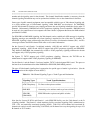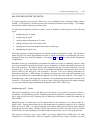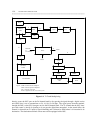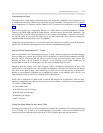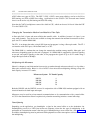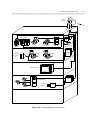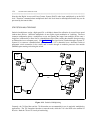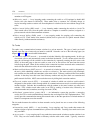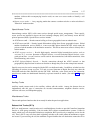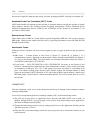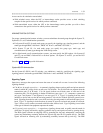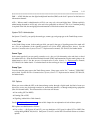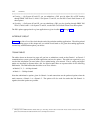1-36 TRUNKING
_ ___________________________________________________________________________________________________________________________
_ ___________________________________________________________________________________________________________________________
_ ___________________________________________________________________________________________________________________________
attendant or ACD agents.
• 800-service trunks — 1-way incoming trunks connecting the switch to a CO equipped to handle 800
Service calls (also known as INWATS). These trunks allow a customer, for a monthly charge, to
receive incoming station-to-station calls from telephones in a defined service area without charge to the
caller.
• Direct inward dialing (DID) trunks — 1-way incoming trunks connecting the switch to a local CO.
These trunks allow calls from the public network to complete to terminals (stations) assigned to a
private network switch without attendant assistance.
• Direct outward dialing (DOD) trunks — 1-way outgoing trunks for outgoing calls connecting the
switch to a CO. These trunks allow terminal (station) users to place calls to a public network central
office directly (without attendant assistance).
Tie Trunks
Tie trunks carry communications between switches in a private network. The type of trunk you install
depends upon the type of network you intend to establish. Networks can be of the following types (see
chapters 2 through 5 for more detailed information):
• Tandem tie trunk (TTT) network — A network of switches linked by dial-repeating trunks. In this type
of network, calls are not automatically routed to the final destination. To call a distant switch, the user
steps the call through all the switches in the connection by repeatedly entering the dial access code
(DAC) of the trunk group to the next switch as soon as he or she receives dial tone from the newest
switch along the path. When all the switches in the connection have been traversed and a connection is
made with the destination switch, the user dials the extension number.
• Main-satellite/tributary (MS/T) network — A network of switches in which one switch is designated as
the main, while subtending switches are satellites or tributaries. The main switch is fully functional;
each satellite uses the trunks and attendants at the main switch. Tributary switches differ from satellite
switches in that they have their own listed directory number and may have their own attendant and
public network facilities. MS/T users reach other users by dialing their extension numbers.
• Electronic tandem network (ETN) — A network of switches in which one switch at each location is
designated as the tandem switch, through which all communications must travel to reach the tandem at
another location. Switches that communicate with the tandem at the same location are called main
switches. ETN switches reach other nodes in an ETN by sending a location code, followed by an
extension number and, sometimes, traveling class mark (TCM).
• Distributed communications systems (DCS) — An information system that provides a messaging
overlay for ETN or main-satellite/tributary networks that are designed for DCS implementations. This
overlay provides communication among the network nodes so that the operation of a limited number of
features is transparent across the network.
The tie trunks between the switches in these networks can be placed into one or more of the following
categories:
• Intermachine trunks (IMTs) — 1-way incoming, 1-way outgoing, and 2-way trunks that connect the
tandem switches of private communications systems with each other. Traveling class marks can be sent
only over IMTs.
• Access trunks — 1-way outgoing and 2-way trunks that connect main switches to tandem switches in an
ETN. They can also connect satellite or tributary switches with a main switch. Typically, extension



